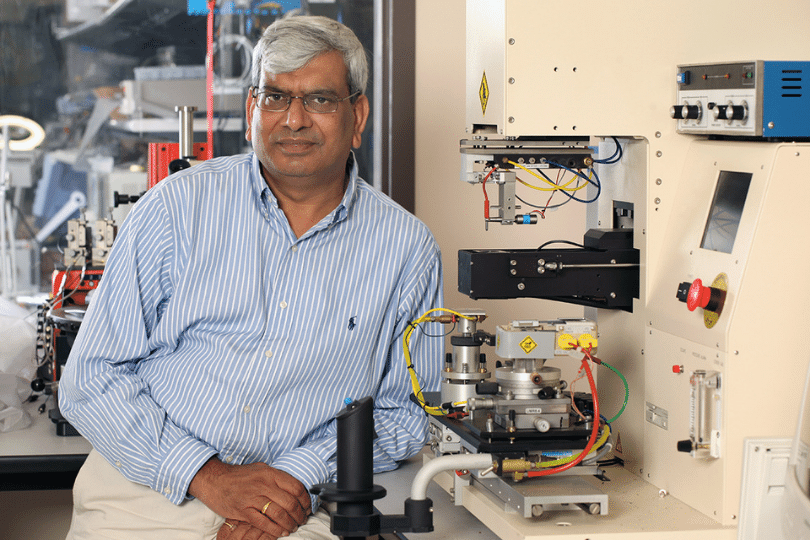As originally published in the Queen's Gazette.

Patents do not just attribute intellectual property; they also recognize contributions towards scientific discovery and innovation. This is particularly true for Praveen Jain, a professor and researcher in the Department of Electrical and Computer Engineering, with more than 100 patents to his name. Testament to his prolific contributions to the advancement of power solutions for an evolving world, Dr. Jain’s patents span the whole range of the power electronics field.
Originally from a small town in India, Dr. Jain recalls going to a school with only one teacher.
“I can remember much of my primary learning occurring sitting under a tree,” he says. “Many in my extended family were engineers, which later inspired me to study engineering.”
After completing his bachelor’s degree, Dr. Jain worked for two companies in India. One of his uncles, who had been mentoring him, suggested that he pursue higher education abroad, and in 1981 he was accepted to the University of Toronto as a graduate student. He completed his study focused on high-frequency power conversion, a topic that carved his future path.
Over the years, Dr. Jain explored power solutions in a number of different careers, beginning with Canadian Astronautics, where he worked on power systems for space applications, including the Canadarm2. This was followed by his employment at Nortel where he created many novel power solutions for telecommunications.
“I further developed my work on space power and applied that technology in telecom,” he says.
Making a difference
Since joining Queen’s, Dr. Jain’s work has spanned the field of power electronics, and included collaborations with peers and industry, as well as mentoring the next generation of researchers. He has founded two companies, CHiL Semiconductor in digital power control chips, and Sparq Systems Inc. in solar microinverters.
His research has been applied in more than 20 major engineering projects, demonstrating the breadth of his contributions’ significance. And his contributions continue: current research focuses on power electronics for smart micro-grids, renewable energy systems, electric vehicles, and information systems.
Consideration of Dr. Jain’s long-standing relationship with the former PARTEQ Innovations, now Queen’s Partnerships and Innovation (QPI), provides insight to this productivity. From 2008 to 2015, PARTEQ received numerous invention disclosures from Dr. Jain and his research group, based on their work with micro-inverters for renewable energy systems. During this period PARTEQ filed patent applications for 10 inventions, including three international patent applications under the Patent Cooperation Treaty (PCT). From those patent applications, 31 patents have been granted in Canada, United States, Japan, Australia, Mexico, China, and India, and three applications are still pending.
In the patent office of each country where a patent application is filed, the application is subjected to examination to confirm the invention is not only new but is not obvious in light of the closest prior work.
Thus, “the grant of a patent attests to the significance of the contribution that the patent makes to its field of technology,” says Stephen Scribner, Director, Intellectual Property at QPI, who prepared and prosecuted these patent applications.
As the director of the Centre for Energy and Power Electronics (ePower), Dr. Jain is collaborating with others to develop innovative solutions, and believes that distributed renewable power represents the future of energy systems.
“By the end of the century, I can see there being no electric grid, just distributed power,” he says. “We have important work to do to advance products and practices that will make better use of renewables and distributed systems that are more efficient, and better for our planet.”
This article is an adaptation of a piece written by Teegan Burks, Electrical and Computer Engineering, Sci ’21, for the Faculty of Engineering and Applied Sciences.
 About Vice-Principal Research
About Vice-Principal Research